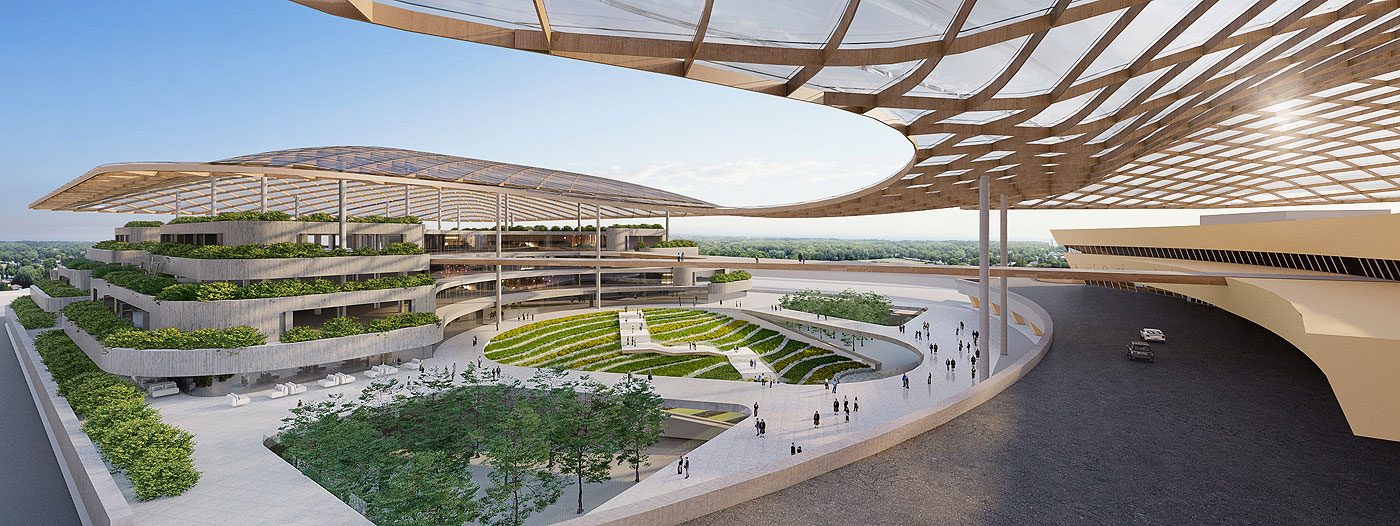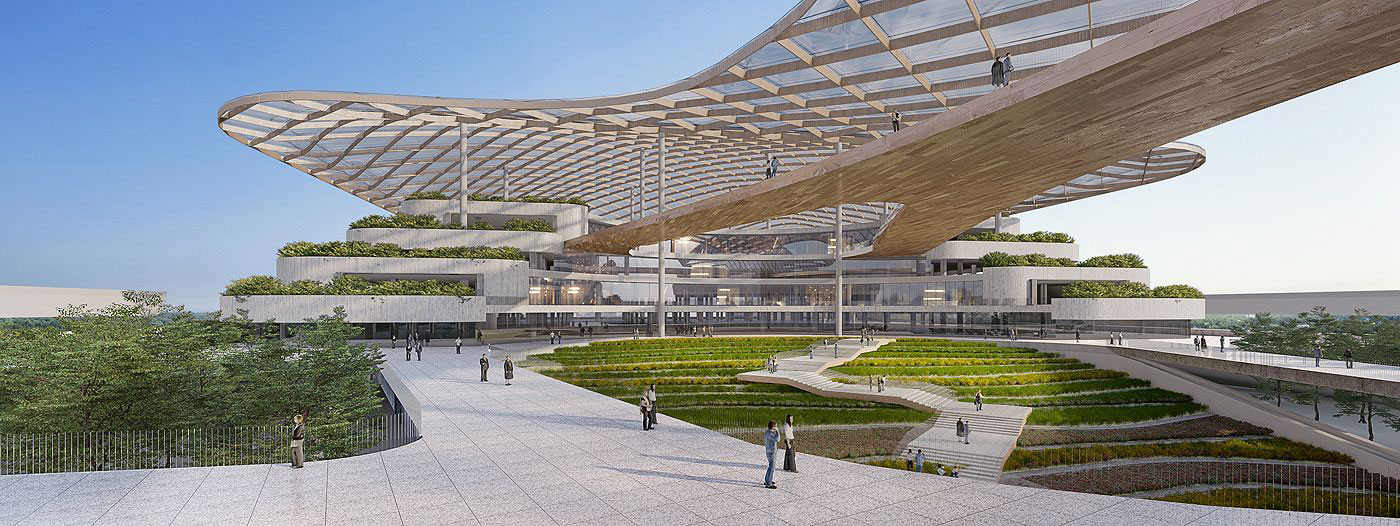Inspired by the 8th Wonder of the World, the Banaue Rice Terraces, Megawide reimagines NAIA as a verdant space that will help promote Philippine tourism and jumpstart economic recovery
Megawide today revealed more details on their architectural plans for the rehabilitation of the Ninoy Aquino International Airport (NAIA) Terminal 1 (T1). The company has proposed the rehabilitation of NAIA with partner GMR Infrastructure Ltd (GMR).
“As the first and last impression visitors and Overseas Filipino Workers will have of the Philippines, NAIA itself should deliver a positive, unforgettable experience that people can equate with their stay. We’re not just rehabilitating an airport – we’re creating a new symbol for the country,” said Louie Ferrer, Megawide Executive Director for Infrastructure Development.
A First-World NAIA: celebrating the natural wonders of the Philippines
In creating the design for the NAIA, Ferrer lauded the natural beauty of the Philippines saying, “There is no better architectural inspiration for NAIA than the natural sights of the Philippines. Ours is a country full of wonder, and the Banaue Rice Terraces rightfully evoke a sense of awe and majesty; this is the kind of experience we want everyone to have the minute they set foot in the airport. We want NAIA’s reputation to change from ‘The Worst Airport’ into ‘An Airport Wonder’,” said Ferrer.
The proposed architectural design for the transformation of Terminal 1 takes inspiration from the Banaue Rice Terraces, a national heritage landmark and considered globally as the 8th Wonder of the World. “There were a number of proposals presented, but when we saw the design for the Banaue Rice Terraces, we knew it was the best fit for the new NAIA. It is an innovation of one of our illustrious peoples, the Ifugao; a landmark of our country’s agricultural expertise; and a symbol of community and cooperation,” he explained.

The Banaue Rice Terraces are reported to have been built more than 2,000 years ago. The organized system of irrigated rice terraces, said Ferrer, is a product of perseverance, innovation, and community spirit. “The Banaue Rice Terraces, in recent years, have undergone so many changes. We don’t just want to help promote tourism to these areas; we want to spark a deeper cultural appreciation so that we may help Filipino people, such as the Ifugao, to preserve their heritage sites,” he continued.
“Hagdan”
The central landscape, called the “Hagdan” (“Steps”) is a sunken garden that is reminiscent of the terraces. These terraces are continued in the upper levels of the new parking and commercial building in front of the existing terminal designed by National Artist Leandro Locsin. The landscape and new building is envisioned as a dedicated area for well-wishers and passengers waiting for their flights. Ferrer says this communal space takes into consideration the close-knit culture of Filipinos.
“Most areas for well-wishers in airports are highly perfunctory. Our intent is to create a dedicated, enjoyable space where people can relax while waiting for connecting flights or arriving passengers, and where departing passengers can spend more time with their loved ones without hurry and stress,” he said.
The communal concept is similar to the Airport Village at the Mactan-Cebu International Airport Terminal 1, commissioned in January 2020 with no less than Pres. Rodrigo Duterte as the guest of honor.
Woven roof structure and multi-level pathways
A transparent canopy extends between the existing and new buildings, providing protection from the elements. The canopy’s latticed wooden detail is reminiscent of Filipino weaving patterns and accentuates the multi-level walkways that connect the two buildings, proving a dramatic backdrop for people strolling through the area.
This new feature is designed by Integrated Design Associates (IDA) Hong Kong, the same architectural firm that designed the MCIA Terminal 2 and the new Clark International Airport Passenger Terminal Building. MCIA, particularly Terminal 2, has repeatedly brought pride to the Philippines with multiple international awards in architecture, design, and operations, including 2019 Winner – Transport Buildings, Completed Category in the World Architecture Festival; 2019 Winner – Airports and Transportation Centers Category in the International Architecture Awards; 2018 Asia Pacific Medium Airpiort of the Year in the CAPA Aviation Awards, among others.

First phase improvements will uplift NAIA experience
Originally designed to handle 30 million passengers per year, NAIA handled 48 million in 2019. MEGAWIDE GMR’s proposal will increase NAIA’s current capacity of 30 million to 65 million passengers per annum over a strategic and phased approach. Terminals 1-3 will see massive improvements , particularly in the first phases of the concession, that will allow passengers to have efficient use of facilities, faster transactions, and enjoy their stay in the terminals with better dining and retail experience.
All three terminals will be rehabilitated within the first phase, including reconfiguration of check-in, expansion of dining and retail areas, and improvements in the baggage handling systems. Enhanced security areas and bathroom renovations will be prioritized. Canopies will be installed in the parking facility open areas to allow people to move seamlessly, and the drainage system will be fixed to prevent flooding.
“We believe that public infrastructures can be and are symbols of our culture and pride as Filipinos. Their architecture, interiors, quality of operations and service should combine world-class practices with the best of what our country has to offer. Build, Build, Build, while of significant economic importance, will also leave a lasting cultural and social legacy. This is a crucial window for all of us to pitch in towards a first-world Philippines,” concluded Ferrer.
